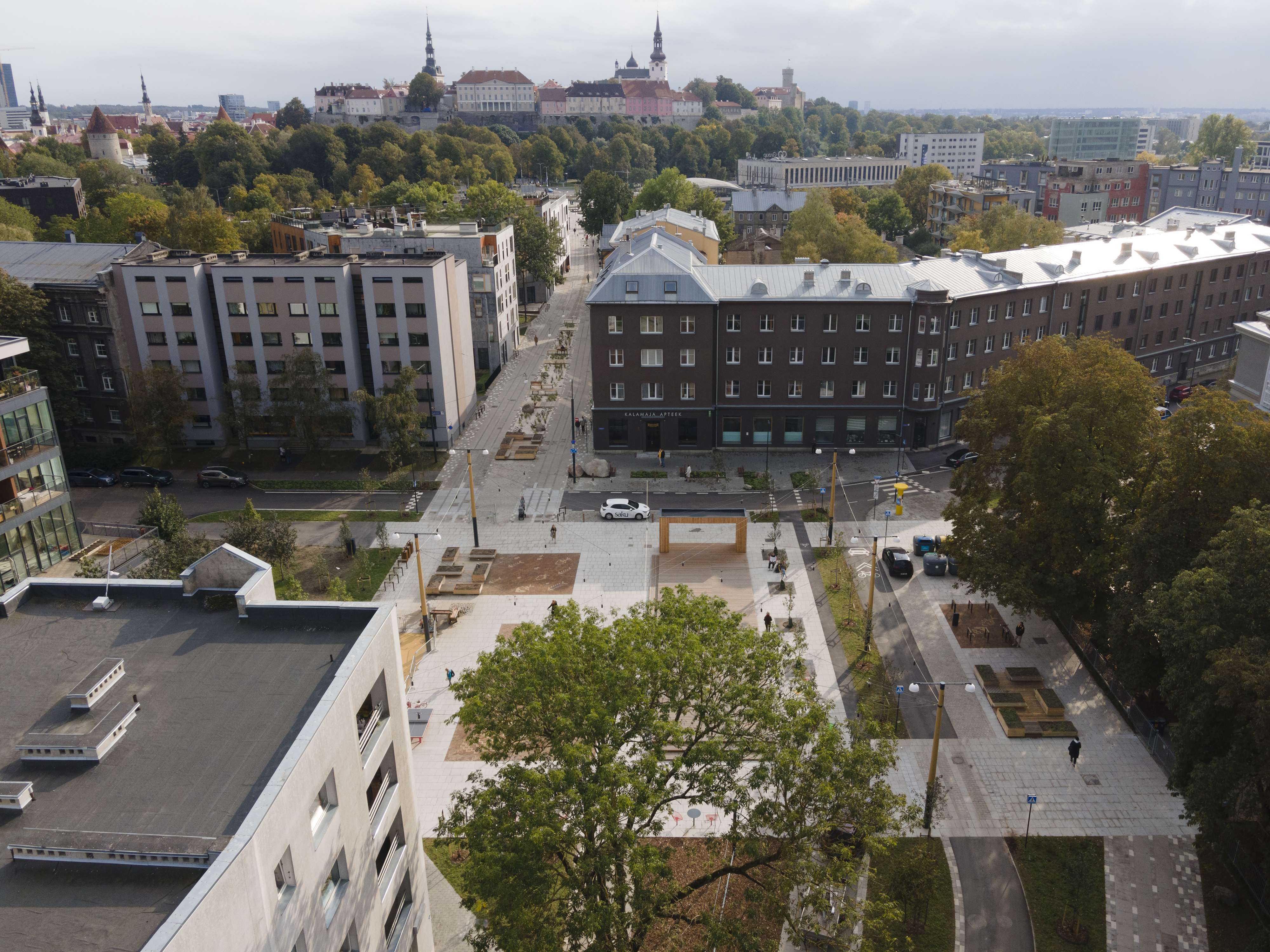
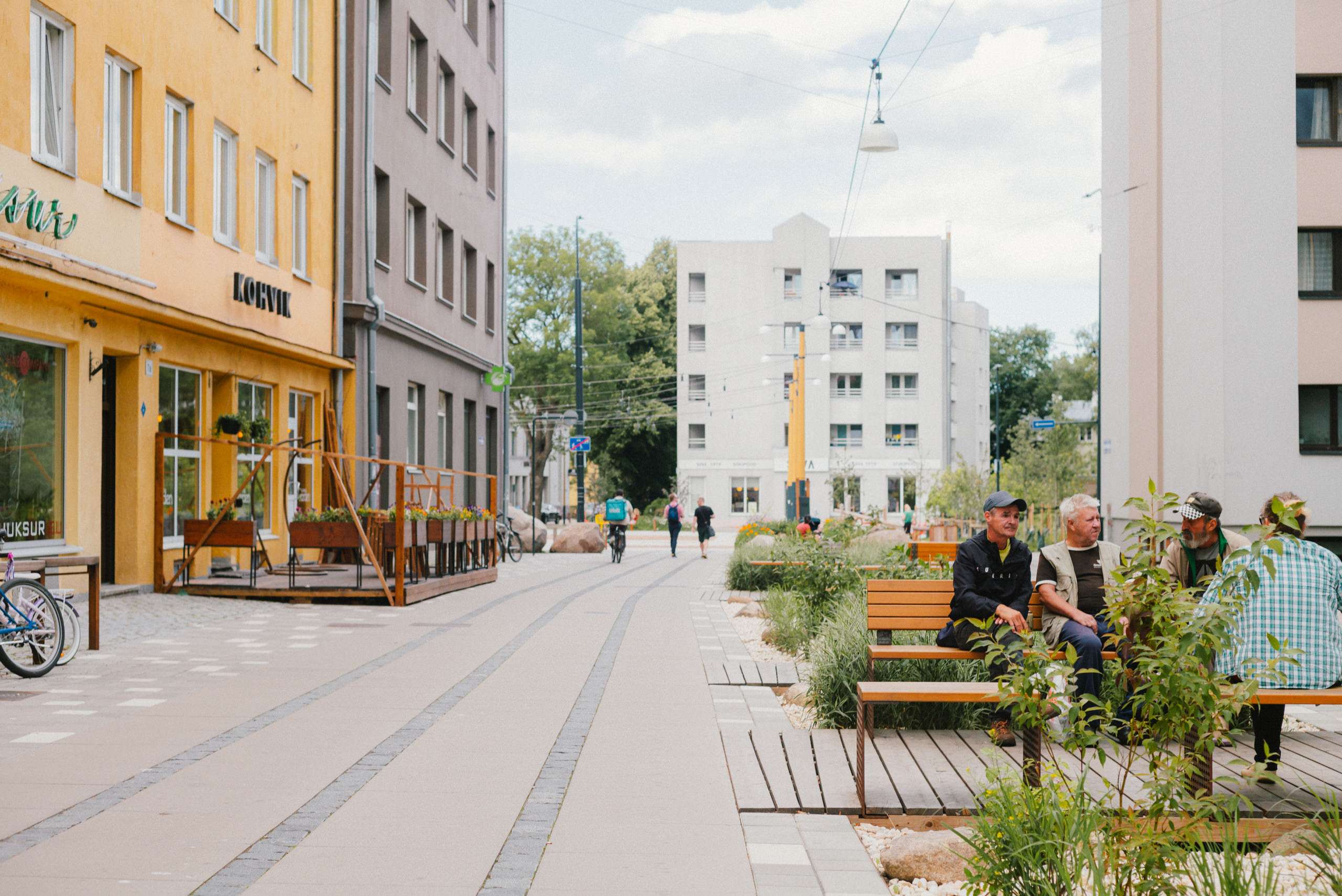
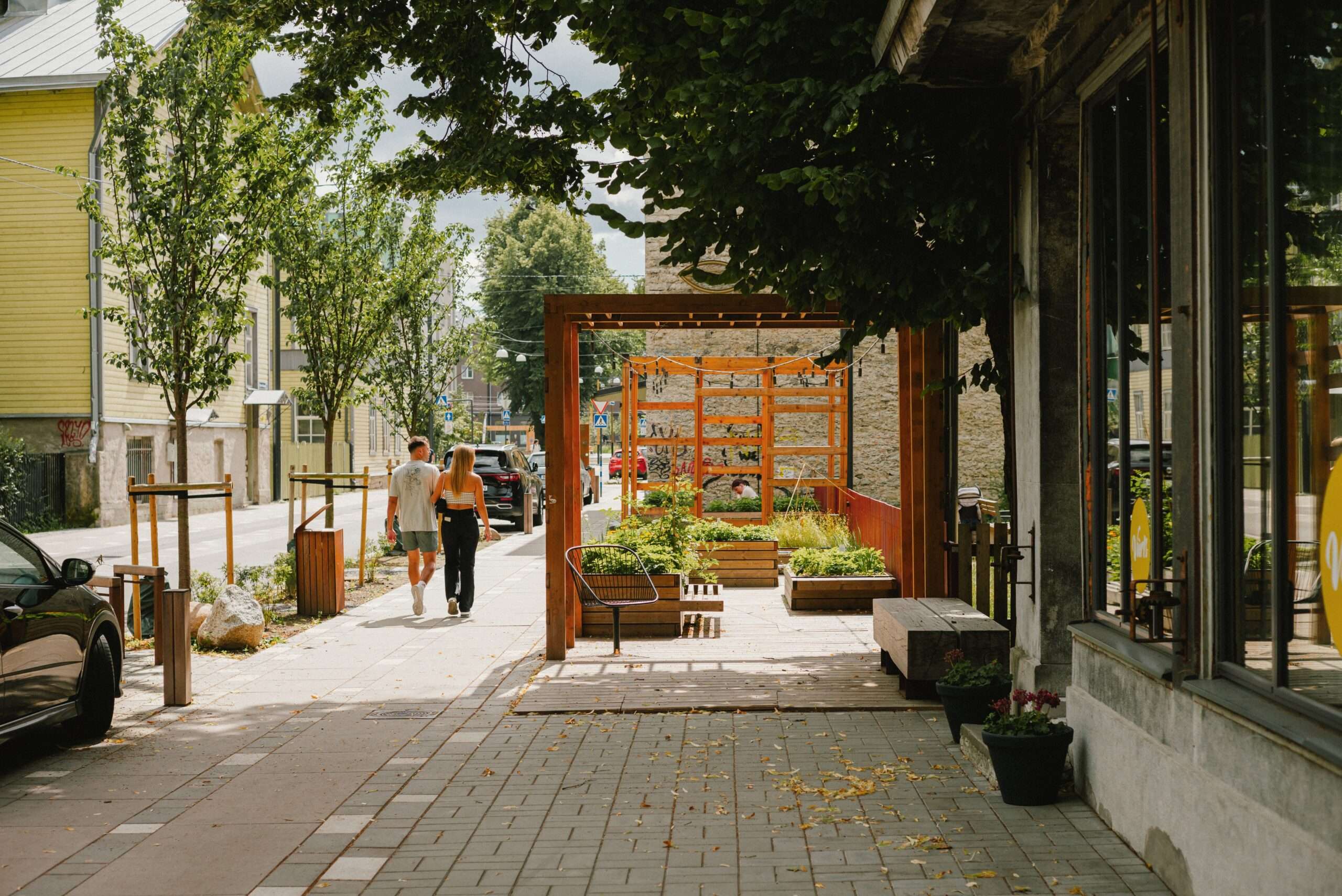
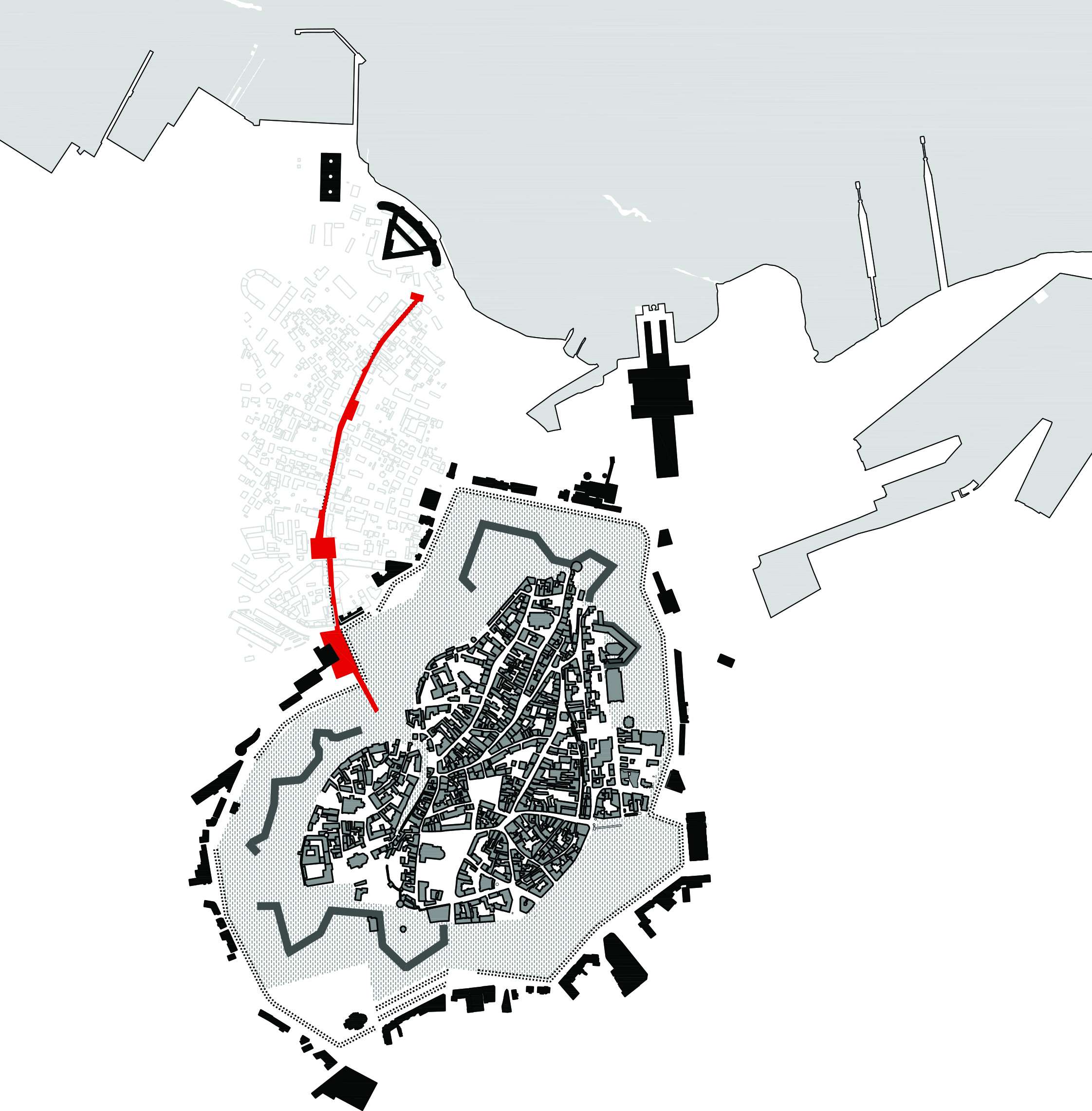
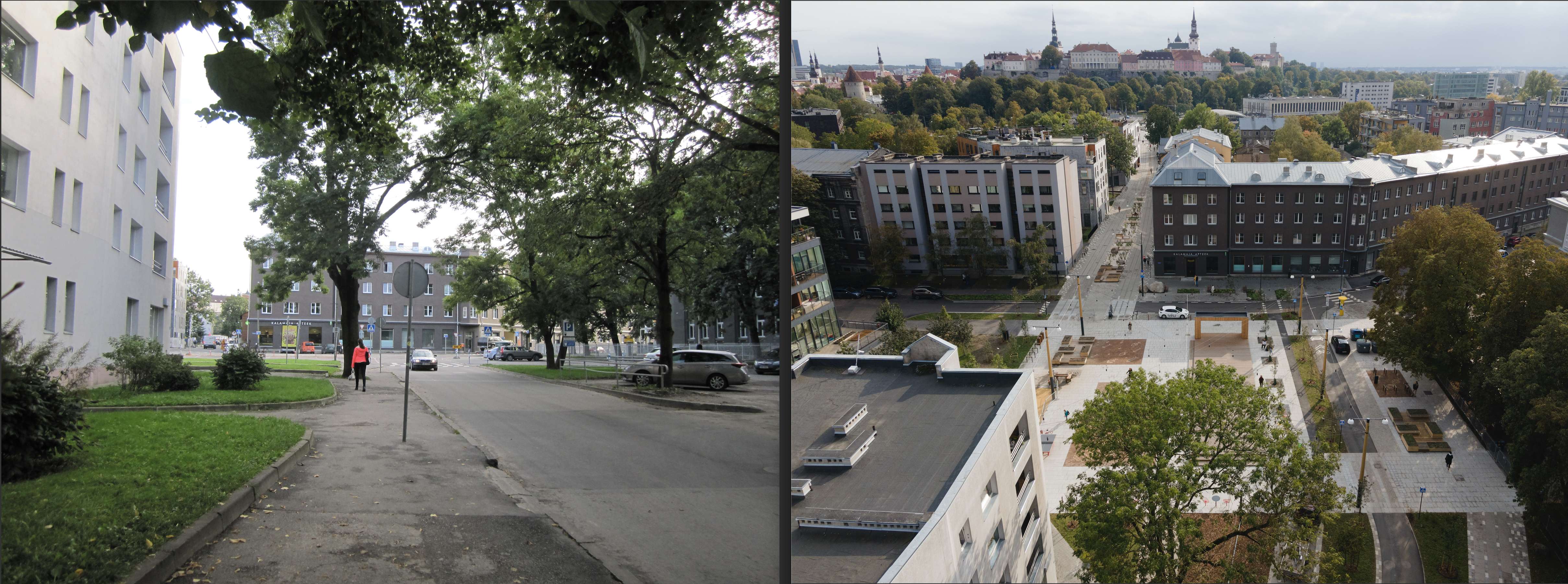

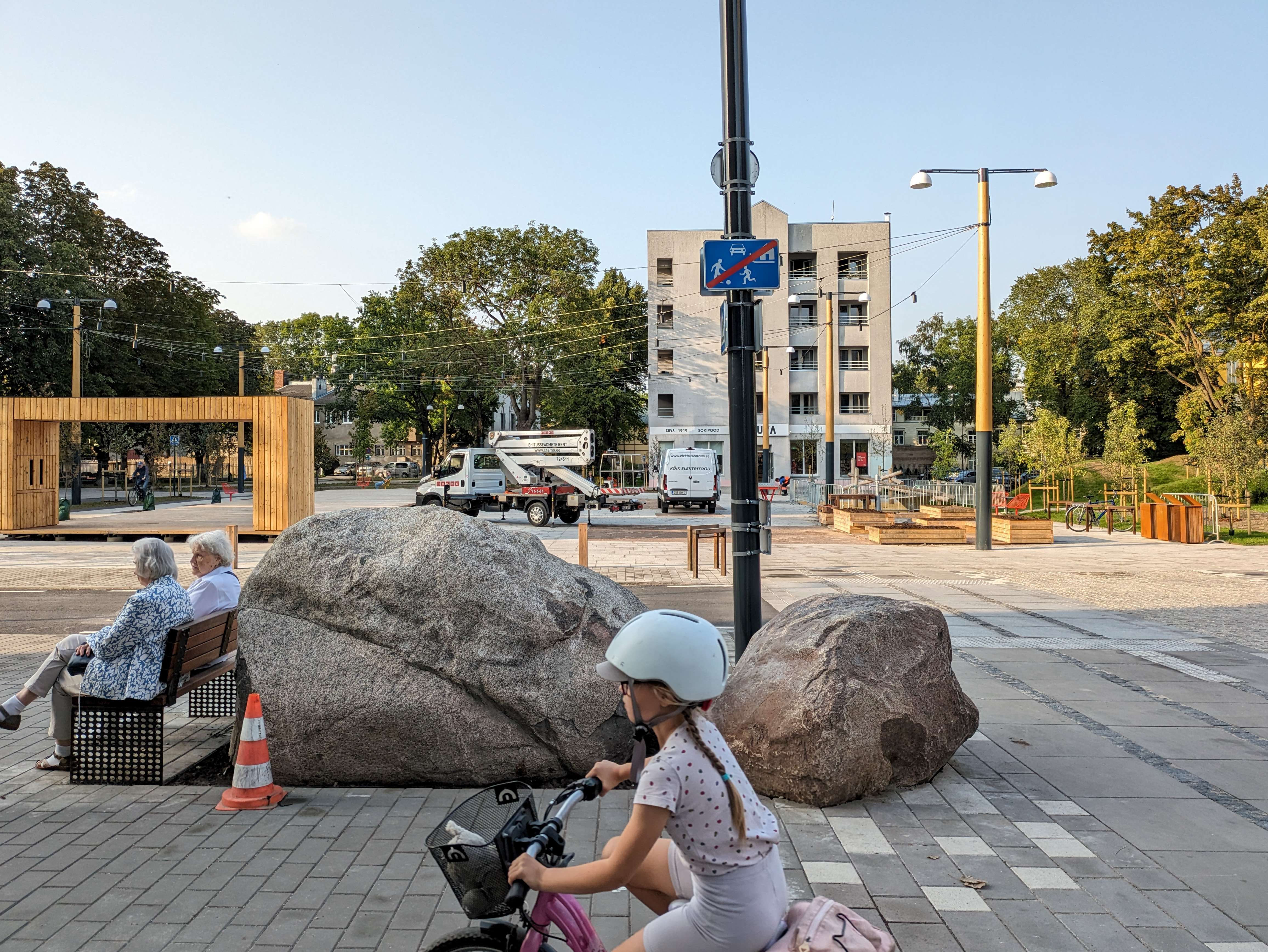

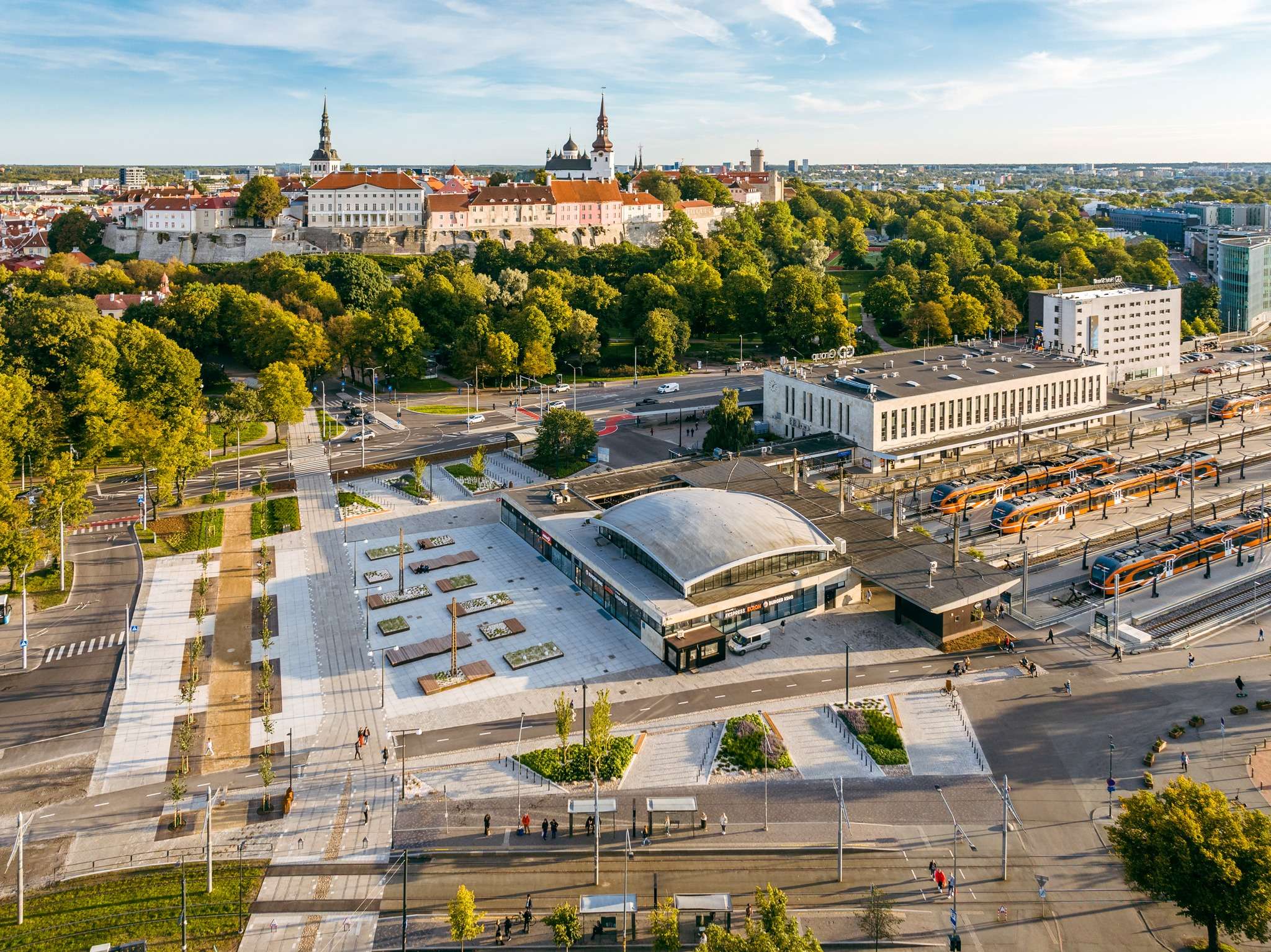

Vana-Kalamaja
Vana-Kalamaja street reconstruction
Previous state of the work
Kalamaja is the oldest suburb of Tallinn. Vana-Kalamaja (‘Old Fish-house’ in Estonian), the central street of the wooden district of Kalamaja, had been one of the oldest roads from the old town to the sea.
Kalamaja's connection to the old town has historically been deliberately awkward - it was neighborhood where poorer people lived. In the Middle Ages, Kalamaja was cut off from the old town by moats and ramparts, later the separation continued with a railway, a multi-lane street, bus station barriers and large parking lots. The connection to the old town was allowed only through the pedestrian tunnel.
To this day, the historical pattern of segregation has remained, although it is no longer necessary or desirable.
Until recently, Tallinn had the fastest growing number of private cars among European capitals. Asphalt fields and temporary parking lots of the city's free parking zone continued to expand in the area. The potential urban space was interrupted and fragmented by intersecting roadways, a temporary parking lot for busses, booths built instead of a street corridor, and high curbs.
Aim of the intervention
The task of the architectural competition was based on a thorough, nearly 10-year preparatory work by the local community, the city government and the architects' union. It is the first time in Tallinn that the local community and architects have been involved in a large-scale street renovation project (until now it has remained the sole domain of traffic engineers).
The most obvious goal was a street reconstruction, i.e. a balanced street space between different modes of movement and street users.
At the same time, the street had to value and highlight the rich history and diverse spaces of the old neighborhood. The street starts at the edge of the bastion park in the old town and goes through the entire Kalamaja, ending at the edge of the prehistoric seashore. Such a mosaic space is very characteristic of Tallinn. Thus, one of the tasks of the project was to create or rediscover a number of different types of small places that could bring together the local community.
The street’s hubs are two new city squares:
One is Kotzebue Square, the center of the neighborhood (here is located school, historic public sauna, local museum, pharmacy, etc.).
The second square is a city-wide multimodal transport hub (train station, bus station, tram, trolley). It also connects the bastion belt with the station market.
Description of the intervention
The street reconnects the Kalamaja and the old town.
Uniform but varied street paving with gutters, rain gardens and luminars in the middle of street help tie together a diverse neighborhood. Different types of pavements divide the street surface between different users, all in the same plane. For all modes of movement the space is clear and continuous, but overlapping and cross-used when necessary.
First part of the 1.1 km long street (closer to the old town), is car-free. Rest of the street, cars and bicycles share a common driving direction/lane with a speed limit of 20 km/h, to accommodate all users on a cross-section only 10...14 m wide. Where the street is wider, there was room to create places and accommodate street activities, highlighting the contents of adjacent lots (kindergarten, small park, playground, etc.)
In cooperation with the local museum, a street exposition is being completed, showcasing old phone booth, manhole covers, street signs etc. Along the street are planting boxes waiting to be adapted by local garden enthusiasts.
Between the bus and train stations, a new square allows peaceful waiting, framed by a restored section of Glasii boulevard. For the first time, this brings a cultural dimension between the two transport hubs - it "restores" the historic street, which for various reasons had not been realized until now.
Although the street is popular among visitors, it is designed for the local community. The daily needs of the local people and their possibilities to communicate and make new acquaintances are brought to the fore. The architects of the street are themselves daily users of this street as locals.
